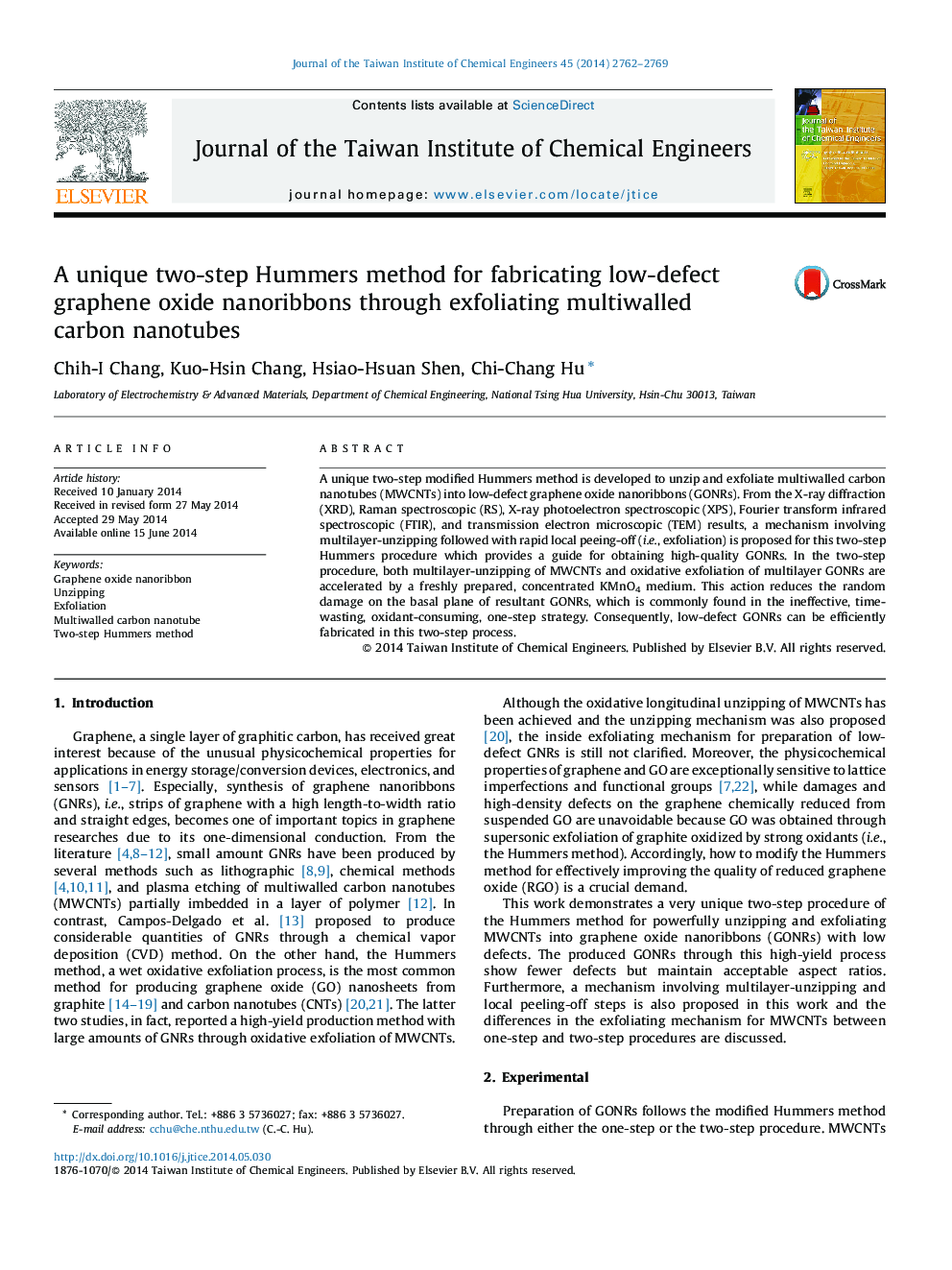| Article ID | Journal | Published Year | Pages | File Type |
|---|---|---|---|---|
| 691549 | Journal of the Taiwan Institute of Chemical Engineers | 2014 | 8 Pages |
•GO nanoribbons are prepared from exfoliating multiwalled carbon nanotubes.•Low-defect GO nanoribbons are approached by a unique two-step Hummers method.•A mechanism involving multilayer-unzipping with rapid local peeing-off is proposed.
A unique two-step modified Hummers method is developed to unzip and exfoliate multiwalled carbon nanotubes (MWCNTs) into low-defect graphene oxide nanoribbons (GONRs). From the X-ray diffraction (XRD), Raman spectroscopic (RS), X-ray photoelectron spectroscopic (XPS), Fourier transform infrared spectroscopic (FTIR), and transmission electron microscopic (TEM) results, a mechanism involving multilayer-unzipping followed with rapid local peeing-off (i.e., exfoliation) is proposed for this two-step Hummers procedure which provides a guide for obtaining high-quality GONRs. In the two-step procedure, both multilayer-unzipping of MWCNTs and oxidative exfoliation of multilayer GONRs are accelerated by a freshly prepared, concentrated KMnO4 medium. This action reduces the random damage on the basal plane of resultant GONRs, which is commonly found in the ineffective, time-wasting, oxidant-consuming, one-step strategy. Consequently, low-defect GONRs can be efficiently fabricated in this two-step process.
